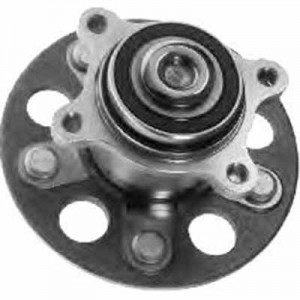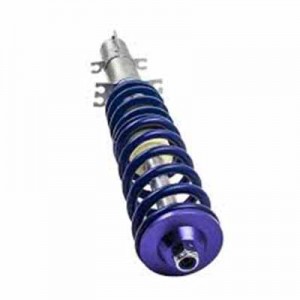Car Suspension Shock Damper Shock Absorber-Z11057
Twin Tube Shock Absorber
The twin tube design has an inner tube known as the pressure tube and an outer tube known as the reserve tube. The outer tube is an oil reservoir. As the rod travels up and down, fluid is pushed / pulled through the base valve and into / out of, the reserve tube. The valving in the piston only operates while submerged in oil. Tangrui shocks are engineered with enough oil to fill the reserve tube, regardless of shock travel or position. The pressure tube is always full of oil.
Application Specific Valving
Ride engineers select valve codes or damping force values for a particular vehicle to achieve optimal ride characteristics of balance and stability under a variety of driving conditions. Their selection of bleeds, deflective valve discs, springs and orifices control fluid flow with the unit, which ultimately determines the feel and handling of the vehicle.
Piston Design
Some shock absorbers are constructed using an aluminum die-cast design, requiring a rubber O-ring to prevent oil from bypassing the valve. Tangrui sintered iron piston design allows for more precise piston dimensions, requiring no additional components for improved durability and an exceptional fit.
Robust Hydraulic Lockout
Hydraulic lockout stops, and cushions, the upward movement of the shock, which prevents over extension of the suspension, top-out of the piston and averts damage to the seal assembly. This can help prevent air bags from damaged in extreme situations.
Shouldered Bushings
Tangrui shock absorbers are engineered with shouldered bushings. The shoulder keeps the bushing located and prevents walkout.
Nitrogen Gas-Charging
Gas-charged shocks add nitrogen to the basic hydraulic shock design to enhance performance and provide a more responsive, smoother ride. Inside a gas-charged shock, a low-pressure charge of nitrogen gas is added in the chamber above the hydraulic oil, helping to reduce fade, minimize vibrations, extend service life and, most importantly, minimize aeration of hydraulic fluid.
Gas charging minimizes hydraulic fluid aeration, which causes foaming. Aeration negatively impacts performance. The addition of nitrogen gas to the shock, compresses air bubbles in the hydraulic fluid and prevents the oil and air from mixing to create foam. By reducing aeration, the gas-charged shock is more responsive and performs better by providing consistent damping.
Application :

| Parameter | Content |
| Type | Shock absorber |
| OEM NO. |
546512Z200 546612Z200 553112S000 |
| Size | OEM standard |
| Material | ---Cast steel---Cast-aluminum---Cast copper---Ductile iron |
| Color | Black |
| Brand | For IX35 |
| Warranty | 3years/50,000km |
| Certificate | ISO16949/IATF16949 |








